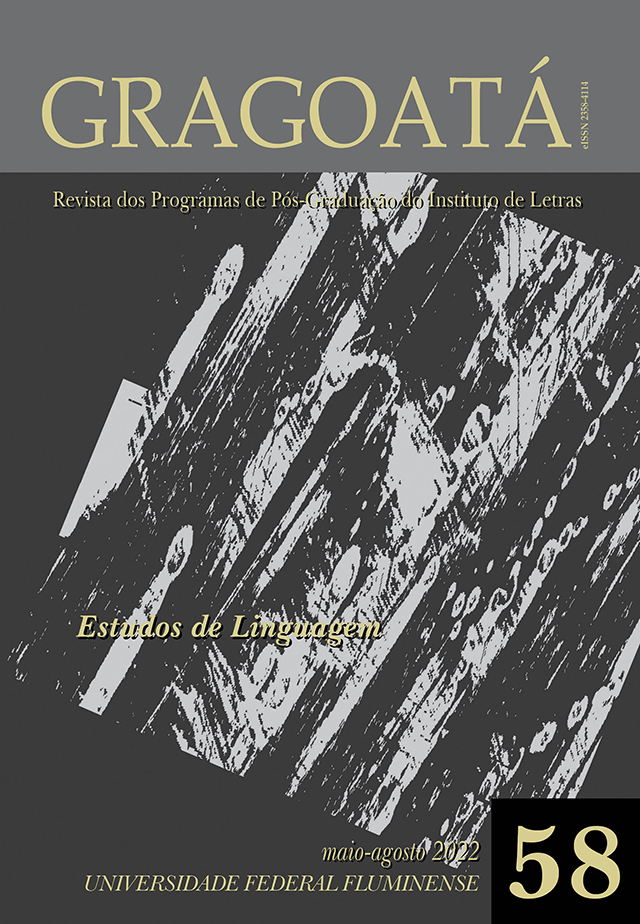Intercalação Hipotática Temporal entre sujeito e verbo em Língua Portuguesa e a (re)construção referencial
DOI:
https://doi.org/10.22409/gragoata.v27i58.51658Palavras-chave:
Cláusulas Hipotáticas Temporais, Referenciação, Intercalação, Descontinuidade, DeslocamentoResumo
As cláusulas temporais que se intercalam entre sujeito e verbo têm função de orientação referencial, segundo Cavalcante (2020), embora o autor não a tenha especificado com detalhes. Nesse sentido, a partir de um diálogo entre o Funcionalismo linguístico e a Linguística Textual (NEVES, 2004; BRAGA; PAIVA, 2017), objetivamos verificar o modo como as temporais intercaladas entre sujeito e verbo servem à referenciação (MONDADA; DUBOIS, 2019 [1995]). O corpus desta investigação é composto de textos formais compilados pelo grupo de pesquisa NUPACT-UFJF. Após coleta de cláusulas temporais prototípicas, introduzidas pelo conector “quando”, localizamos 439 dados dessas cláusulas em distintas posições, entre as quais 75 eram intercaladas. Entre as intercaladas, apenas 9 tokens representavam o type sujeito-cláusula temporal-verbo, cujo referente sujeito é analisado sob a ótica dos processos referenciais (CAVALCANTE; MARTINS, 2020) e pelos parâmetros “definitude” (NEVES, 2013), “estatuto informacional” (PRINCE, 1992), “acessibilidade anafórica” e “persistência catafórica” (GIVÓN, 1995). Os resultados mostram que as temporais intercaladas podem servir a várias funções no processo de referenciação, dentro da função mais geral de (re)construção referencial: (i) focalizar determinado recorte na linha evolutiva temporal da existência de um referente, (ii) restringir um referente, (iii) recategorizar um referente, (iv) especificar um referente, (v) construir uma avaliação de um referente, (vi) retomar anaforicamente um referente, (vii) promover a topicalização de um referente, (viii) facilitar a referenciação tópica e (ix) explicitar uma mudança de perspectiva tópica. Confirma-se, portanto, a assunção de que os usos intercalados servem à (re)construção referencial nos textos e podem também contribuir para o dinamismo tópico das enunciações.
Downloads
Downloads
Publicado
Edição
Seção
Licença
AUTORIZAÇÃO
Autores que publicam em Gragoatá concordam com os seguintes termos:
Os autores mantêm os direitos e cedem à revista o direito à primeira publicação, simultaneamente submetido a uma licença Creative Commons Atribuição 4.0 Internacional (CC BY 4.0), que permite o compartilhamento por terceiros com a devida menção ao autor e à primeira publicação pela Gragoatá.
Os autores podem entrar em acordos contratuais adicionais e separados para a distribuição não exclusiva da versão publicada da obra (por exemplo, postá-la em um repositório institucional ou publicá-la em um livro), com o reconhecimento de sua publicação inicial na Gragoatá.
A Gragoatá utiliza uma Licença Creative Commons - Atribuição CC BY 4.0 Internacional.











